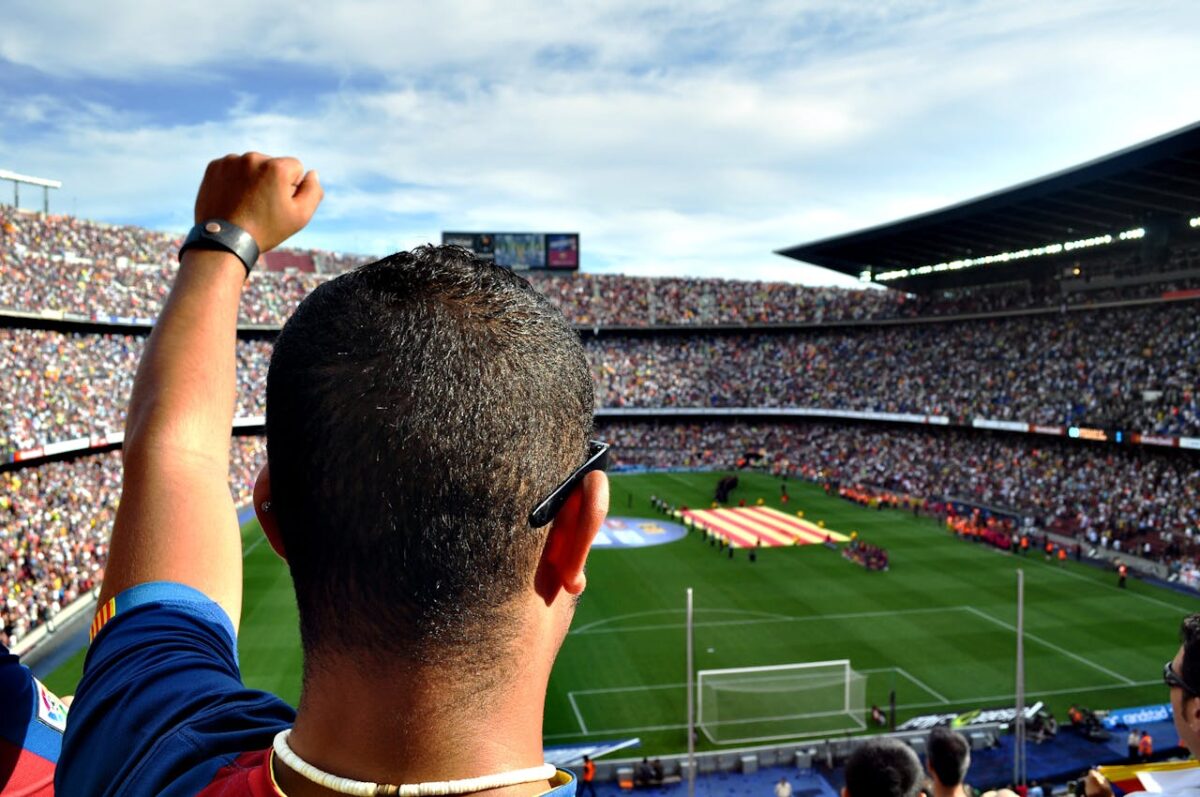Super Bowl LVIII shone not only because of the players’ skills and the presence of Taylor Swift. Technology on and off the field was one of the biggest stars of the event.
The link between sports and great innovations has never been more tangible and lucrative.
Did you take a look at the Allegiant Stadium project? Its technological development is really impressive!
The facility for the game between the Kansas City Chiefs and the San Francisco 49ers was developed by MANICA, a boutique architectural firm, which stands on the famous Strip in Las Vegas, with an aesthetic that mimics that of luxury cars.
And who is surprised by the magnitude of its technological resources, when it itself has a futuristic look to make everyone gasp in wonder?
Table of Contents
ToggleA Luxury And Sustainable Venue For Super Bowl LVIII
Allegiant Stadium is powered entirely by renewable energy sourced from Nevada.

According to the developer, the water supply is supported by a system that employs “high-efficiency” components to mitigate excessive water use, saving nearly 535 million gallons per day.
The roof is made of ETFE, a polymer that allows for full stadium illumination, provides climate adaptability benefits, insulation performance, self-cleaning, and a long service life, and it’s also recyclable.
The engineering team employs a building management system, based on monitoring and control software and hardware.
Through this technology, it diligently tracks and reviews energy optimization data in real-time to make effective decisions about daily energy consumption, associated with particular events, such as the Super Bowl.
More companies than ever are using facility management software to improve their operations, and sport clearly hasn’t been left behind!
In terms of connectivity, the arena incorporates a DAS (Distributed Antenna System) that ensures optimal mobile communications coverage, compatible with 4G and 5G technology.
The facility comprises 10 levels, 127 VIP suites, restaurants, and retail space. It has the capacity to accommodate 65,000 spectators, with the option to adjust its design and receive up to 72,000 visitors and it cost US$1.8 billion to build.
Did you know that it is considered the second most expensive sports stadium in the world after the soFi stadium in California?
A Super Bowl Broadcast Never Seen Before
The enjoyment of the technological display was not exclusive to fans who paid between US$6,246 and US$45,313 to experience the NFL final live.
CBS, the television network in charge of broadcasting the Super Bowl, installed a system of 165 cameras inside and outside Allegiant Stadium to follow the event.
The coverage plan added 48 capture devices for very low-speed shots and 24 4K zoom extraction cameras, a type of photographic zoom that makes it easier to see details in replays.
CBS implemented for the first time ‘Doink’ cameras, small high-definition rigs that are placed in the vertical recesses of the field markers.
The set is complemented by three sky cams, two fly cams, and three drones for aerial shots, plus 24 robotic cameras that transmitted live content inside the stadium and from around the city.
During the Super Bowl, 23 augmented reality cameras were used, of which 11 were used in the CBS telecast process, eight during Nickelodeon’s alternate telecast, and four on the network’s set at the Bellagio Fountains, the legendary Las Vegas hotel and casino.
This infrastructure made it possible to transmit images in 1080p high dynamic range and 4K HDR.
This was the first time that a National Football League (NFL) final was broadcast in this resolution, which was a dream experience for everyone.
The improved quality was met with higher viewer figures than ever, and attracted gamblers as well as sports fans, everybody eager to take a flutter on the outcome of the match.
In the lead-up to the big game, thousands of people were making both formal and informal bets, and checking out sites like Bodog that offer Super Bowl odds, in order to up their chances of betting on the best team.
There was a very impressive turnout and the tech side of things has definitely had an impact, both with the hype and with the immersion!
Social networks and platforms also got into the game. Super Bowl LVIII was the stage for the debut of an immersive experience.
In collaboration with the NFL, Snapchat integrated its Camera Kit technology for fans to interact with Augmented Reality experiences projected on the spectacular screens of the stadium.

AI Took Part In The Super Bowl
In recent years, the NFL has incorporated various systems and technological resources to optimize player performance.
Has a player been injured in the past? It won’t happen again, because these technologies can also prevent injuries and improve safety conditions during season games, such as the Super Bowl!
The NFL and other sports organizations are increasingly investing in innovative technology in all aspects of their businesses.
From digital player twins to predict and prevent injuries to metaverse experiences for fans, the league has set a standard for implementing technological advances before 2024, and can be seen as a leading organization in the overall sports industry going forward.
The Super Bowl can be considered an ecosystem of innovation when you factor in all the surrounding advertising efforts that explore new media and ways to interact.
Did you know that the performance of professional soccer players is also enhanced by technology?
It looks like more than a third of NFL teams use Zebra Technologies’ RFID tag-based tracking technology.
These are small devices, weighing less than 4 grams, that are installed on the shoulder pads of players’ uniforms and on footballs.
They capture location, speed, and acceleration data of each player and play in real-time with high accuracy.
The information is processed through Zebrainstal’s Next Gen Stats software. Coaches and strategic staff can predict plays and optimize their game plans. Wow, has tech changed the face of sport in today’s world!











